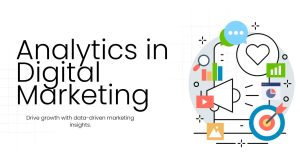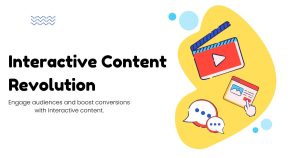How to Create an Emotional Marketing Campaign That Converts

Every day, consumers encounter thousands of marketing messages. Between social media ads, email promotions, and traditional advertising, brands are competing for limited attention spans and even more limited purchasing decisions. The companies that cut through this noise aren’t necessarily those with the biggest budgets or the flashiest graphics. They’re the ones that connect with their audience on an emotional level.
An emotional marketing campaign doesn’t rely on features and benefits alone. Instead, it taps into feelings that drive human behavior: joy, fear, nostalgia, pride, or even anger. When done correctly, emotional marketing transforms casual browsers into loyal customers and turns one-time buyers into brand advocates.
Research consistently shows that emotions play a crucial role in decision-making. According to neuroscientist Antonio Damasio’s studies, people with damage to the part of the brain responsible for emotions struggle to make even simple decisions. This suggests that our feelings aren’t just influencing our choices—they’re essential to the decision-making process itself.
Understanding the Psychology Behind Emotional Marketing
Emotional marketing works because it bypasses rational thinking and speaks directly to our subconscious minds. When we encounter an emotionally charged message, our brains process it faster than logical arguments or product specifications.
The limbic system, which controls our emotions, processes information about 20,000 times faster than the neocortex, where rational thought occurs. This means emotional responses happen almost instantaneously, while logical evaluation takes considerably more time and effort.
Successful brands understand this psychological principle and use it strategically. They know that people buy based on emotion and then justify their purchase with logic. A luxury car buyer might be motivated by the desire to feel successful or admired, but they’ll rationalize the purchase by discussing fuel efficiency, safety ratings, or resale value.

Core Emotions That Drive Consumer Behavior
Different emotions create different behavioral responses. Understanding which emotions align with your goals helps you craft more effective campaigns.
Joy and Happiness
Positive emotions create powerful associations with your brand. When people feel happy, they’re more likely to share content, make impulse purchases, and develop positive brand memories. Joy-based campaigns often feature bright colors, uplifting music, and scenarios that make viewers smile or laugh.
Coca-Cola has mastered this approach with campaigns like “Share a Coke” and “Open Happiness.” These campaigns associate the brand with moments of connection, celebration, and simple pleasures.
Fear and Urgency
Fear-based marketing can be incredibly effective when used ethically. This includes fear of missing out (FOMO), fear of making the wrong choice, or fear of negative consequences. Limited-time offers, countdown timers, and exclusive access all tap into these anxieties.
However, fear-based marketing requires careful handling. The goal should be to motivate action, not to manipulate or cause genuine distress.
Trust and Security
Particularly important for financial services, healthcare, and technology companies, trust-based emotions help consumers feel confident in their choices. These campaigns often feature testimonials, certifications, guarantees, and transparency about processes or ingredients.
Nostalgia and Belonging
Nostalgic marketing transports people back to simpler or happier times. It’s particularly effective with products that have long histories or when targeting specific generational groups. Nike’s retro sneaker releases and Disney’s live-action remakes both capitalize on nostalgic emotions.
Building Your Emotional Marketing Campaign Strategy
Creating an effective emotional marketing campaign requires strategic planning and deep audience understanding.

Define Your Target Emotion
Start by identifying which emotion aligns with your brand values and resonates with your target audience. Consider your product category, customer demographics, and desired outcomes. A meditation app might focus on peace and stress relief, while a fitness brand might emphasize confidence and achievement.
Your chosen emotion should feel authentic to your brand. Attempting to evoke emotions that don’t align with your company’s values or mission will come across as inauthentic and may damage trust.
Research Your Audience’s Emotional Triggers
Understanding what motivates your audience requires going beyond basic demographics. Conduct surveys, interviews, and focus groups to uncover emotional pain points and aspirations. Social media listening tools can reveal the language your audience uses to express feelings about problems your product solves.
Look for patterns in customer feedback, reviews, and support conversations. What emotions do people express when discussing your product category? What fears, hopes, or frustrations repeatedly surface?
Craft Your Emotional Message
Your message should clearly connect your product to the target emotion. Avoid being heavy-handed or manipulative. Instead, tell stories that naturally evoke the desired feeling while showcasing your product’s role in the narrative.
Use sensory language that helps people imagine themselves experiencing the emotion. Instead of saying “our software saves time,” describe the relief of leaving the office early or the satisfaction of completing projects ahead of schedule.
Choosing the Right Channels and Format
Different platforms and formats excel at evoking different emotions. Video content often works best for complex emotional narratives because it combines visual, auditory, and storytelling elements. Social media platforms like Instagram and TikTok are excellent for joy and aspirational emotions, while email marketing can effectively create urgency or exclusivity.
Consider where your audience is most emotionally receptive. People might be in different mindsets on LinkedIn versus Instagram, affecting how they respond to emotional messages.
Video Storytelling
Video remains one of the most powerful mediums for emotional marketing. Short-form videos can quickly establish mood and feeling, while longer formats allow for complex narrative arcs that build emotional investment.
Focus on storytelling rather than product features. Show your product improving someone’s life or solving a meaningful problem. The most memorable ads often feature minimal product placement but maximum emotional impact.
Social Media Campaigns
Social platforms enable immediate emotional responses through likes, shares, and comments. User-generated content campaigns can amplify emotional connections by featuring real customers experiencing genuine emotions related to your brand.
Consider platform-specific emotional norms. What feels authentic on TikTok might seem forced on LinkedIn. Tailor your emotional approach to match platform culture and audience expectations.
Measuring Emotional Campaign Effectiveness
Traditional marketing metrics don’t fully capture emotional impact. While conversion rates and click-through rates matter, emotional campaigns require additional measurement approaches.

Engagement Quality
Look beyond engagement quantity to assess emotional resonance. Are people sharing your content with personal commentary? Do comments reflect the emotions you intended to evoke? High-quality engagement indicates that your message is connecting emotionally.
Brand Sentiment Analysis
Use social listening tools to monitor how people discuss your brand before, during, and after your campaign. Positive shifts in sentiment vocabulary suggest successful emotional connection.
Long-term Brand Metrics
Emotional marketing often builds brand equity over time rather than driving immediate sales. Track metrics like brand recall, consideration, and loyalty to measure longer-term emotional impact.
Common Emotional Marketing Mistakes to Avoid
Emotional marketing can backfire when poorly executed. Here are key pitfalls to avoid.
Emotional Manipulation
There’s a fine line between emotional persuasion and manipulation. Ethical emotional marketing helps people make decisions that genuinely benefit them. Manipulative tactics might drive short-term sales but damage long-term brand trust.
Misreading Your Audience
Assuming what emotionally motivates your audience without research can lead to tone-deaf campaigns. What feels inspiring to your team might feel patronizing to your customers. Always validate emotional assumptions with real audience data.
Ignoring Cultural Sensitivity
Emotions are culturally influenced. Humor, fear appeals, and nostalgic references that resonate in one market might be ineffective or offensive in another. Consider cultural context when planning emotional campaigns for diverse audiences.
Making Emotional Marketing Work for Your Business
Successful emotional marketing campaigns require authenticity, strategic planning, and genuine understanding of your audience’s emotional landscape. Start small with A/B tests comparing emotional versus rational messaging approaches. Measure both immediate response and longer-term brand impact.
Remember that emotional marketing isn’t about manipulation—it’s about creating genuine connections that benefit both your customers and your business. When people feel understood and emotionally satisfied by their interaction with your brand, they’re more likely to become loyal advocates who drive sustainable business growth.
The most powerful emotional marketing campaigns don’t just sell products; they become part of customers’ personal stories and identities. By focusing on authentic emotional connections rather than short-term tactics, you can build a brand that resonates deeply with your audience and stands the test of time.





